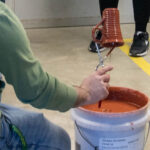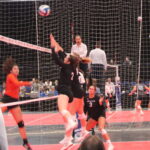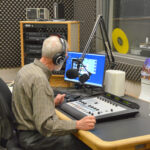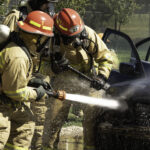The area surrounding Kirkwood Community College almost perfectly fits the description of a food swamp. According to The Humane League, a food swamp is when people have access to healthy options like fruits and vegetables; however, they are flooded with less nutritious alternatives like fast food restaurants and convenience stores that sell junk food and soft drinks. However; the area surrounding Kirkwood faces unique circumstances making food accessibility more difficult than most other food swamps.
Most notably, the public transit system in Cedar Rapids is underwhelming when compared to larger urban areas found across the United States. Even worse, there is not a sidewalk that connects Kirkwood to the nearest grocery store, which is more than three miles from campus. Multiple fast food options are connected by a sidewalk, but these options are far from ideal when it comes to making healthier food choices. The road that leads to the nearest grocery store also features heavy traffic and a wide railroad crossing, making it somewhat dangerous for students to make the trek.
This not only limits access to fresh food, but also toiletries, over the counter medications and other household items for students who live near campus. This problem is only multiplied for students who do not own their own vehicle or who are disabled.
While the area around Kirkwood may be considered a food swamp, it is not a food desert. The USDA’s definition of a food desert reflects major cities, referencing areas such as Atlanta or Jackson, Miss. The issue with this definition is many of the areas that fall under the USDA’s definition have much greater access to public transit and often feature sidewalks.
While Kirkwood’s food pantry is a valuable resource that provides essential support to students, it has limited resources and cannot consistently offer the same quality and range of options as a grocery store. The campus food pantry offers items like toiletries and personal care items, but sometimes the options are limited due to a restricted variety of donations.
Realistically, the college likely can’t create a solution by itself. However, it can use its influence within the surrounding community to urge the city to develop a bus route or sidewalk that can connect students to local grocery stores. If this is unachievable, the college could consider a vanpool option to take students to and from a nearby grocery store.
Kirkwood could also partner with a local grocery store to sell fresh produce and meat on campus. This would ensure that any student who attends class at the Cedar Rapids campus has quick and easy access to fresh fruits and vegetables along with other food groups that might not be readily available.
Solving this problem would not only help students stay healthier, but eating healthy foods is also linked to lower stress levels, greater mental health, and increased cognitive function, according to St. Louis College of Health Careers.
Addressing this issue can help students lead healthier lives, reducing one important stressor. Reducing stressors and increasing your energy levels by making healthier dietary choices has been commonly accepted as one of the best ways to improve test results and overall academic grades.
With the current level of accessible fresh foods, it’s all too easy to eat unhealthy foods. Improving students’ ability to make trips to the grocery store is the best way to a healthier and more successful Kirkwood experience.
It’s time to find a solution to allow students easier access to healthy, affordable food.
Categories: Opinion, Staff Editorials










